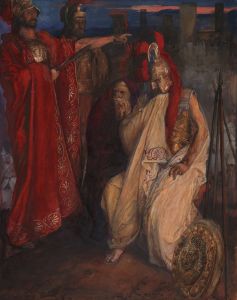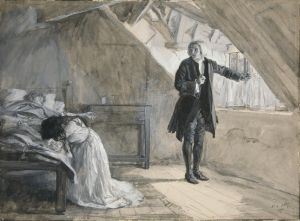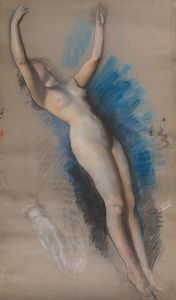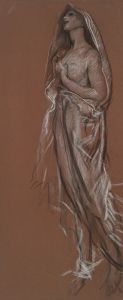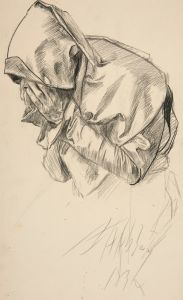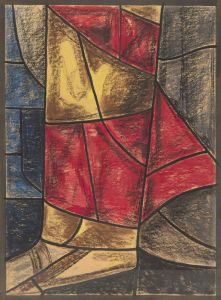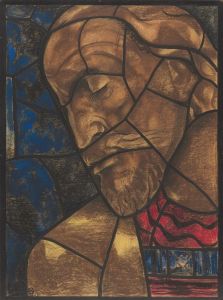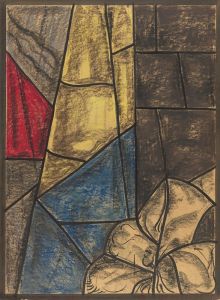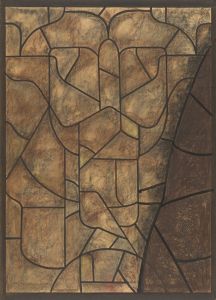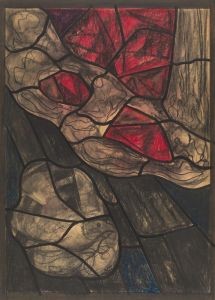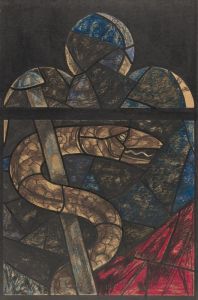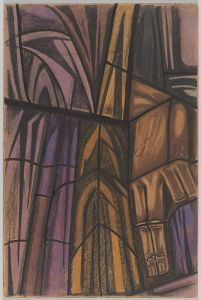
Study for Louis Comfort Tiffany’s center window for ‘Children’s Window’, St. Peter’s Church, Morristown, NJ
A hand-painted replica of Edwin Austin Abbey’s masterpiece Study for Louis Comfort Tiffany’s center window for ‘Children’s Window’, St. Peter’s Church, Morristown, NJ, meticulously crafted by professional artists to capture the true essence of the original. Each piece is created with museum-quality canvas and rare mineral pigments, carefully painted by experienced artists with delicate brushstrokes and rich, layered colors to perfectly recreate the texture of the original artwork. Unlike machine-printed reproductions, this hand-painted version brings the painting to life, infused with the artist’s emotions and skill in every stroke. Whether for personal collection or home decoration, it instantly elevates the artistic atmosphere of any space.
Edwin Austin Abbey, an American artist known for his murals and illustrations, created the "Study for Louis Comfort Tiffany’s center window for ‘Children’s Window’, St. Peter’s Church, Morristown, NJ" as part of a collaborative effort with the renowned glass artist Louis Comfort Tiffany. This study was part of the preparatory work for a stained glass window designed for St. Peter’s Church in Morristown, New Jersey. Abbey, primarily recognized for his work in the late 19th and early 20th centuries, was a prominent figure in the American art scene, particularly noted for his historical and literary subjects.
The "Children’s Window" project was a significant commission that involved Abbey's expertise in composition and narrative, combined with Tiffany's innovative glass techniques. Tiffany, a leader in the Art Nouveau movement, was famous for his stained glass work, which often featured vibrant colors and intricate designs. The collaboration between Abbey and Tiffany was a fusion of Abbey's narrative-driven artistry and Tiffany's technical prowess in glasswork.
Abbey's study for the window would have involved detailed sketches and plans that outlined the thematic elements and visual composition intended for the final stained glass piece. These studies were crucial in ensuring that the final product met both the aesthetic and structural requirements of stained glass art. Abbey's role was to conceptualize the imagery and ensure that it conveyed the intended message and fit harmoniously within the architectural context of the church.
St. Peter’s Church, where the window was installed, is a historic Episcopal church known for its Gothic Revival architecture. The inclusion of a Tiffany window would have added to the church's artistic and cultural significance, as Tiffany's works were highly sought after during this period. The "Children’s Window" likely depicted themes relevant to the church's mission and community, possibly involving biblical stories or moral lessons aimed at engaging the younger members of the congregation.
The collaboration between Abbey and Tiffany represents a broader trend of the time, where artists and craftsmen worked together to create integrated works of art that enhanced public and religious spaces. Such projects were part of the larger Arts and Crafts movement, which emphasized the value of handcrafted art and the integration of art into everyday life.
Unfortunately, specific details about the imagery and themes of the "Children’s Window" study by Abbey are not widely documented, and much of what is known comes from the broader context of Abbey's and Tiffany's work during this era. The study itself would have been a crucial step in the creative process, serving as a blueprint for the final stained glass window that would adorn St. Peter’s Church, contributing to its aesthetic and spiritual environment.





